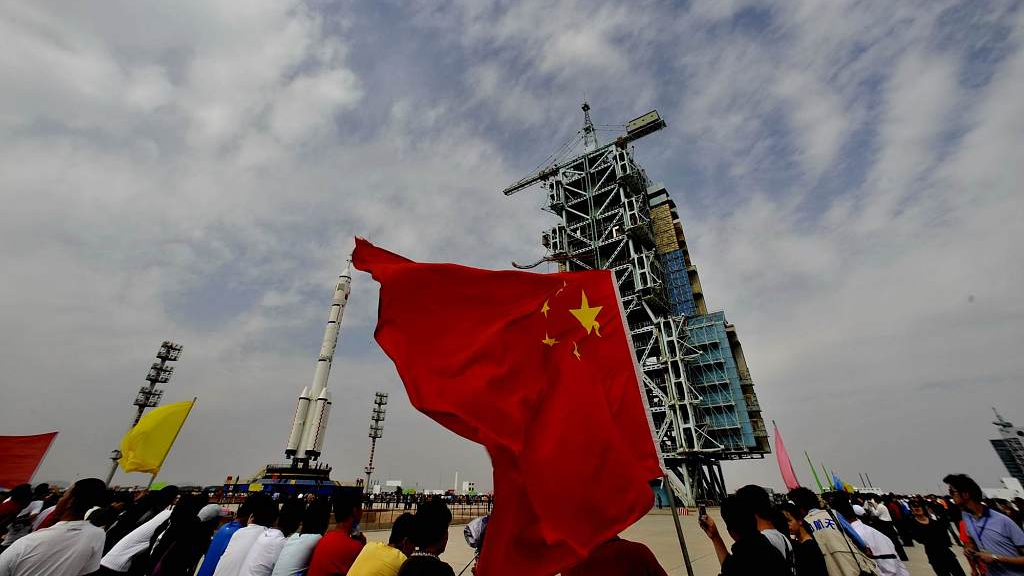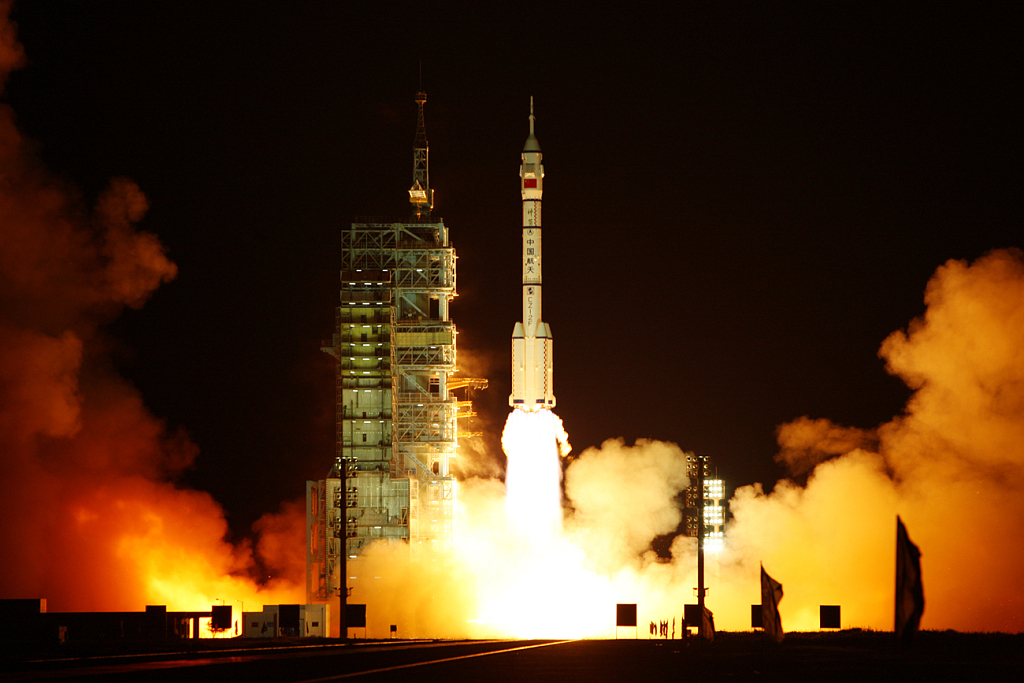
Editor's note: Yang Yuguang is a professor at the China Aerospace Science and the vice-chair of International Astronautical Federation Space Transportation Committee. The article reflects the author's views, and not necessarily those of CGTN.
Extravehicular activity (EVA), crew space transportation and space rendezvous/docking are three fundamental technologies for human space activities. For space-capable nations that desire to build a space station and send astronauts to the moon, these are what they must get good at.
The first EVA in human history was performed by the former Soviet Union cosmonaut Alexei Leonov.
During Voskhod 2 mission on March 18, 1965, he went out of the spaceship and walked in space for 12 minutes. But when he was ready to go back to the spaceship, he had a problem - because of the vacuum environment his spacesuit grew bigger. Therefore, he wasn't able to go back to the airlock. At this critical moment Leonov immediately made up his mind to release some of the air from his spacesuit to make it smaller. Fortunately, he made it and solved the problem.
The first American EVA was performed by the astronaut Edward White during the Gemini 4 mission on June 3, 1965. Different from the spacewalk by Leonov, White held a Maneuver unit to control his movement.
In fact, the first two EVAs were not very successful. The first successful one was done by a U.S. astronaut, Buzz Aldrin, during the Gemini 12 mission in 1966. His practice on scuba diving helped him adapt to the weightless environment. This also helped engineers realize that underwater training is very effective for training astronauts to carry out an EVA.
The first Chinese EVA, successful but rather risky was performed by astronaut Zhai Zhigang during the Shenzhou-7 mission on September 27, 2008.
China utilizes Shenzhou-7's orbital module as an airlock for the spacewalk. When the hatch between the orbital module and the return capsule was closed, all the air in the orbital module was released and it became a vacuum. But just before the spacewalk, Jing Haipeng reported in the return capsule that there was fire in the orbital module due to the malfunctioning issue of some sensors.
At this moment, Zhai Zhigang, with the help of another colleague Liu Boming decided to continue the spacewalk. But they were confronted with another problem. The hatch of the orbital module to the outer space can not be opened. This was because there was still some air in the orbital module, although most of the air had been released. Finally they solved the problem and Zhai successfully performed China’s first spacewalk.

China's Shenzhou VII craft blasted off at the Jiuquan satellite launch center , September 25, 2008. /VCG Photo
China's Shenzhou VII craft blasted off at the Jiuquan satellite launch center , September 25, 2008. /VCG Photo
Zhai's success is extremely meaningful for China's space program. As China plans to build its own space station at the beginning of the 2020s, EVA is a necessary technology to command in order to achieve that very goal.
Although China has only performed one spacewalk so far, there will be more opportunities for Chinese astronauts to do so as China completes its space station in the future. They will install critical devices for the space station outside pressurized modules, and perform scientific research which must be done in a vacuum environment.
However, our vision of China's future space station is not limited to a national laboratory in the outer space. It will aslo be an important platform for international cooperation in space. In fact, China's first spacewalk couldn't be done without international cooperation, as the astronaut Zhai Zhigang was wearing China's "Feitian" spacesuit, and Liu Boming Russia's "Orlan" spacesuit.
In the future, China will also conduct more cooperation with other countries. According to the announcement of China Manned Space Agency and UN Office for Outer Space Affairs, the two organizations have called for experiments onboard China's space station together. Some foreign astronauts from European countries were trained in China and Chinese astronaut Ye Guangfu attended ESA's astronaut training. We can hope to see foreign astronauts visiting China's space station on the Shenzhou Spaceship.
Technically speaking, it is also possible for spacecrafts from other countries to visit China's "Tiangong" space station. Because China also has the plan to extend its space station to have more modules, the highest level of cooperation will be an experimental module from other country. And of course, all these activities are for the peaceful use of the outer space, and for the benefits of the mankind.
China is a powerful nation. However, right now it's not an advanced country in the space field yet. The country will continue its space station program, the Beidou navigation satellite constellation and the Lunar exploration projects. We should emphasize that China conducts all these programs according its own needs. Space activities are essential for China to enhancing its high-technology industry. It is meaningless for China to compete with any other country in the space filed. But on the other hand, competition in commercial space activities may bring low cost, high efficiency and innovation to the space field.
(If you want to contribute and have specific expertise, please contact us at opinions@cgtn.com)